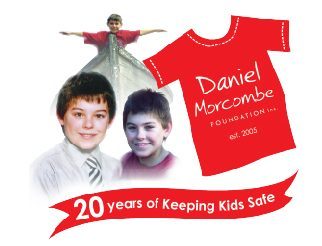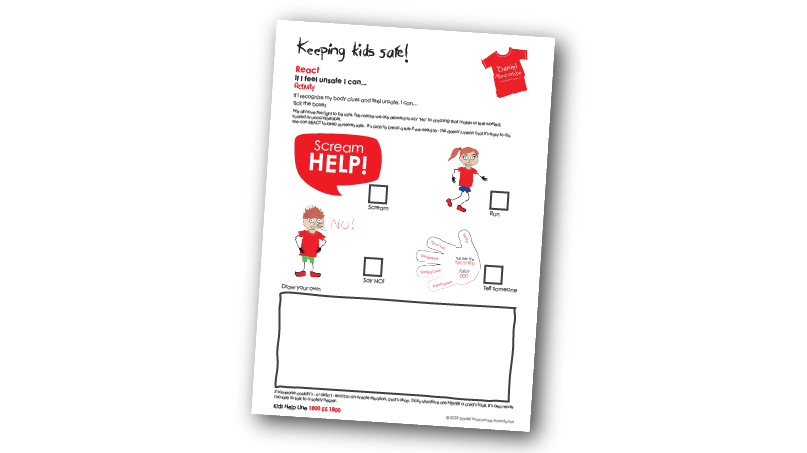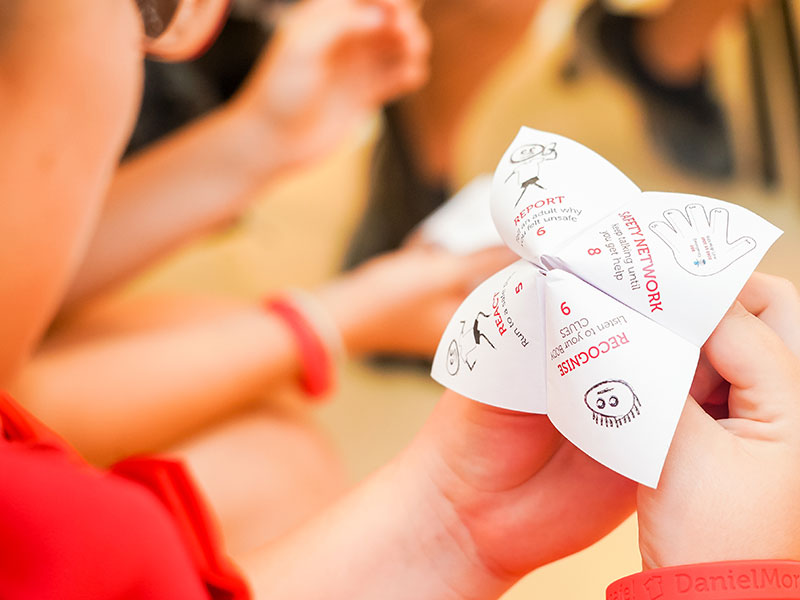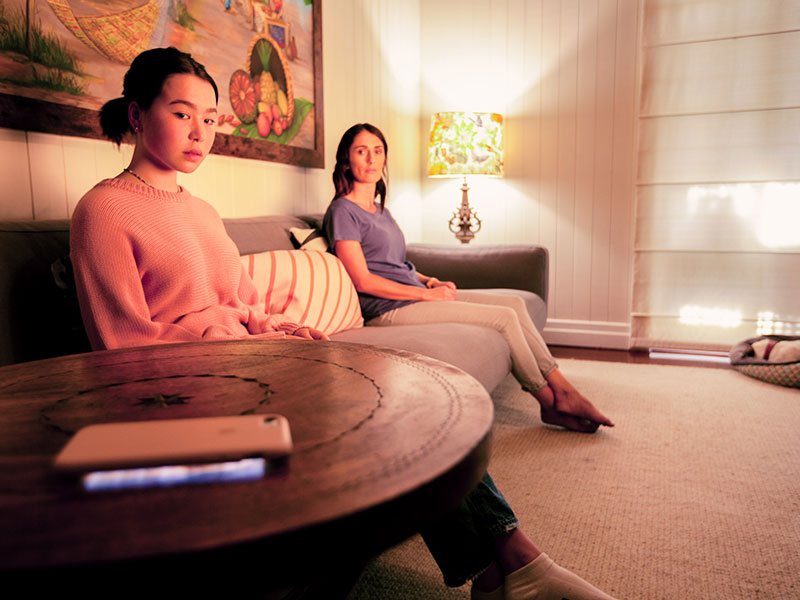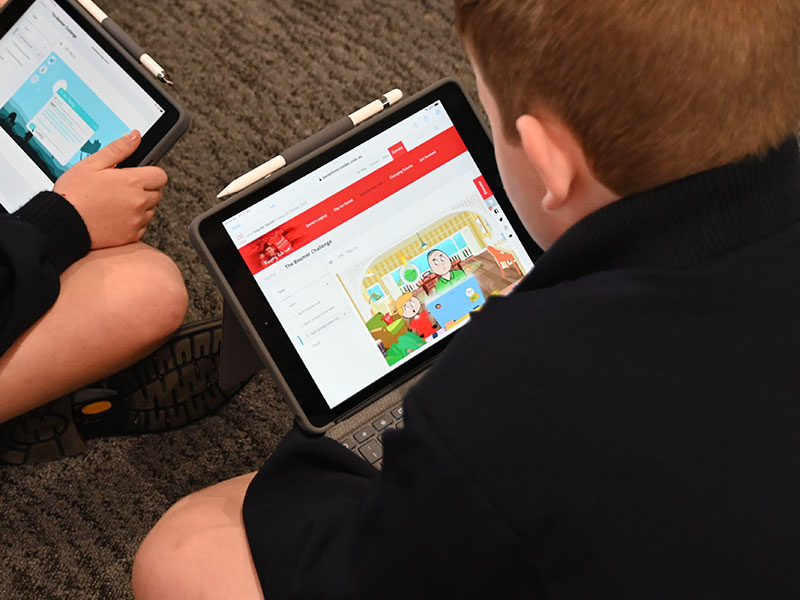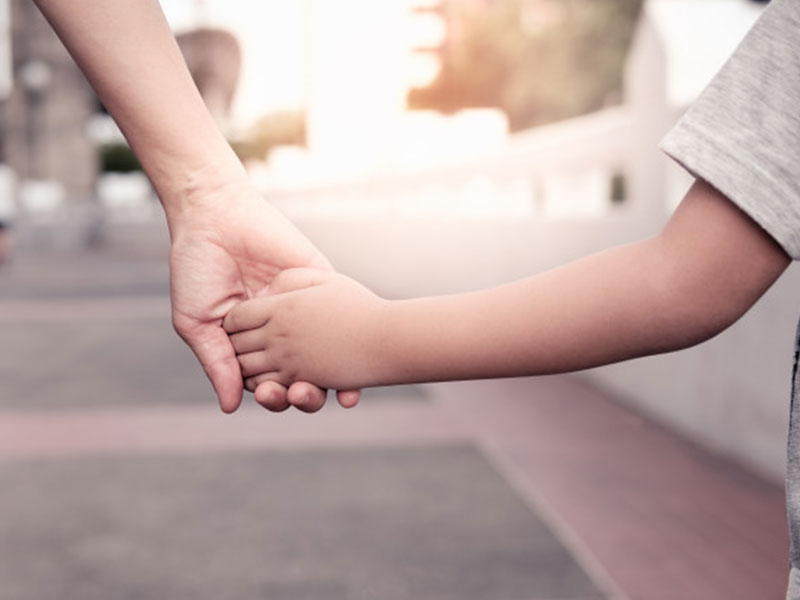
Keeping Kids Safe Resources
Home »Keeping Kids Safe Resources
The Daniel Morcombe Foundation Keeping Kids Safe Resources have been created in memory of Daniel Morcombe to help keep other children and young people safe. Every year new resources will be developed and released.
The resources are written for a diverse range of students from prep to senior years and the suite contains over 20 videos and activities. They are best used as part of a comprehensive whole school approach to personal safety education and are aligned with the following:
- Australian Curriculum, Assessment and Reporting Authority (ACARA)
- Daniel Morcombe Child Safety Curriculum
- Health Promoting Schools Framework
Teachers have access to teacher guides to support classroom delivery and parent/carer resources are available to encourage discussions about personal safety at home.
Access ALL Resources here
Interactive Resource / Resources for teachers / School & ELC Resources
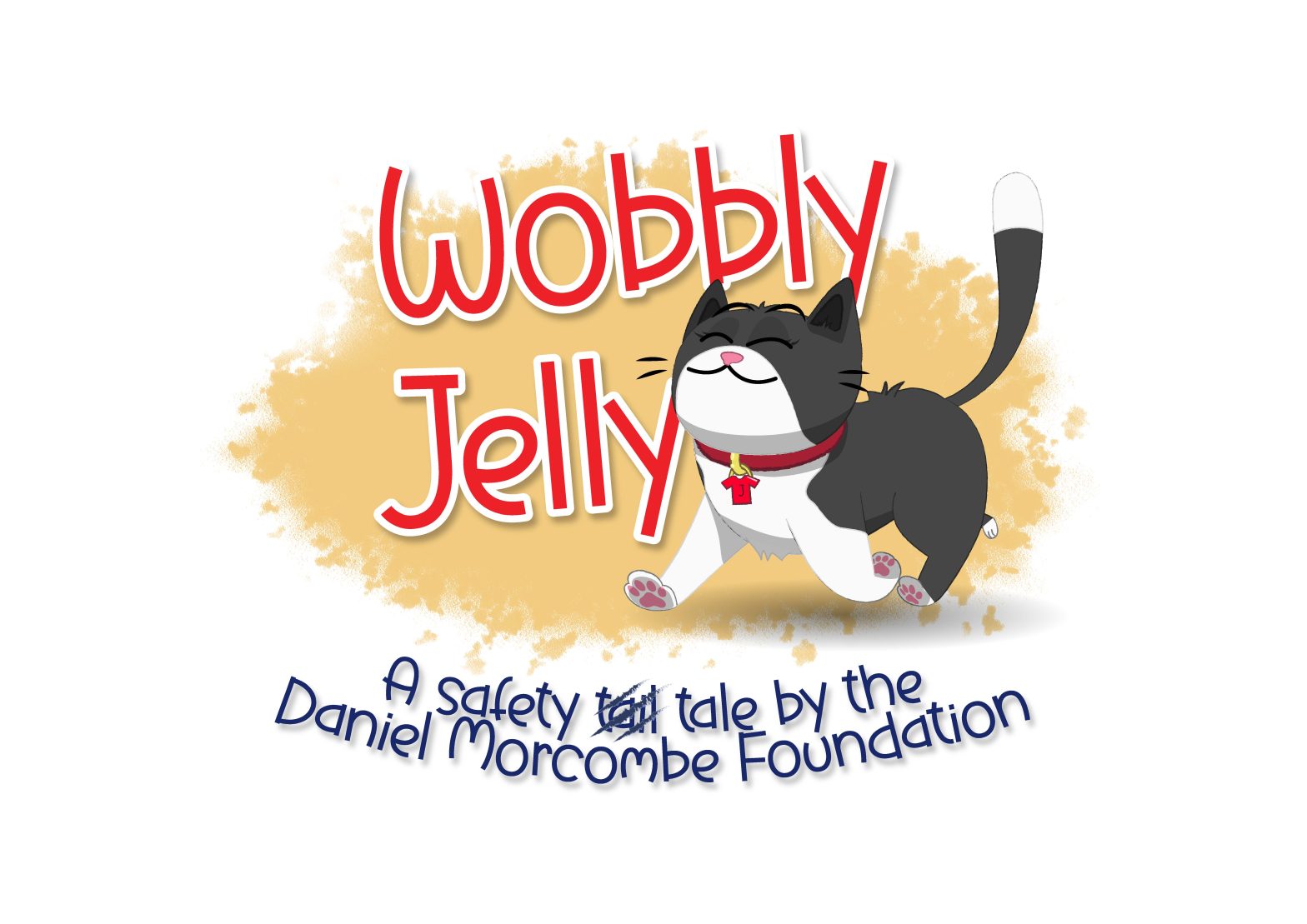
Wobbly Jelly
ABCSL / Interactive Resource / School & ELC Resources
2024 - Upper Primary
For children aged 8 to 12, the theme will focus on enthusiastic consent including how to give and receive it, and how to identify grooming and coercive behaviours.
ABCSL / Interactive Resource / School & ELC Resources
2024 - Early Years and Lower Primary
For children aged 4 to 7, the theme will focus on enthusiastic consent including how to give and receive it, and how to identify grooming and coercive behaviours.
Online Safety / School & ELC Resources

Challenges and Choices
Interactive Resource / Recognise, React, Report
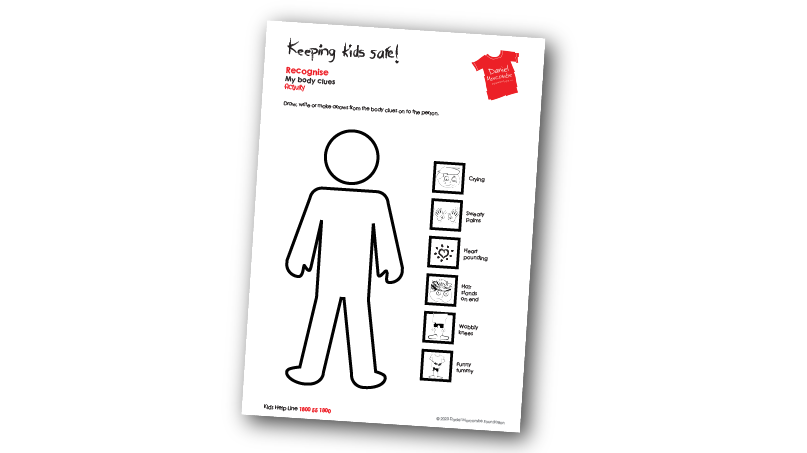
Recognise - My body clues
Interactive Resource / Recognise, React, Report
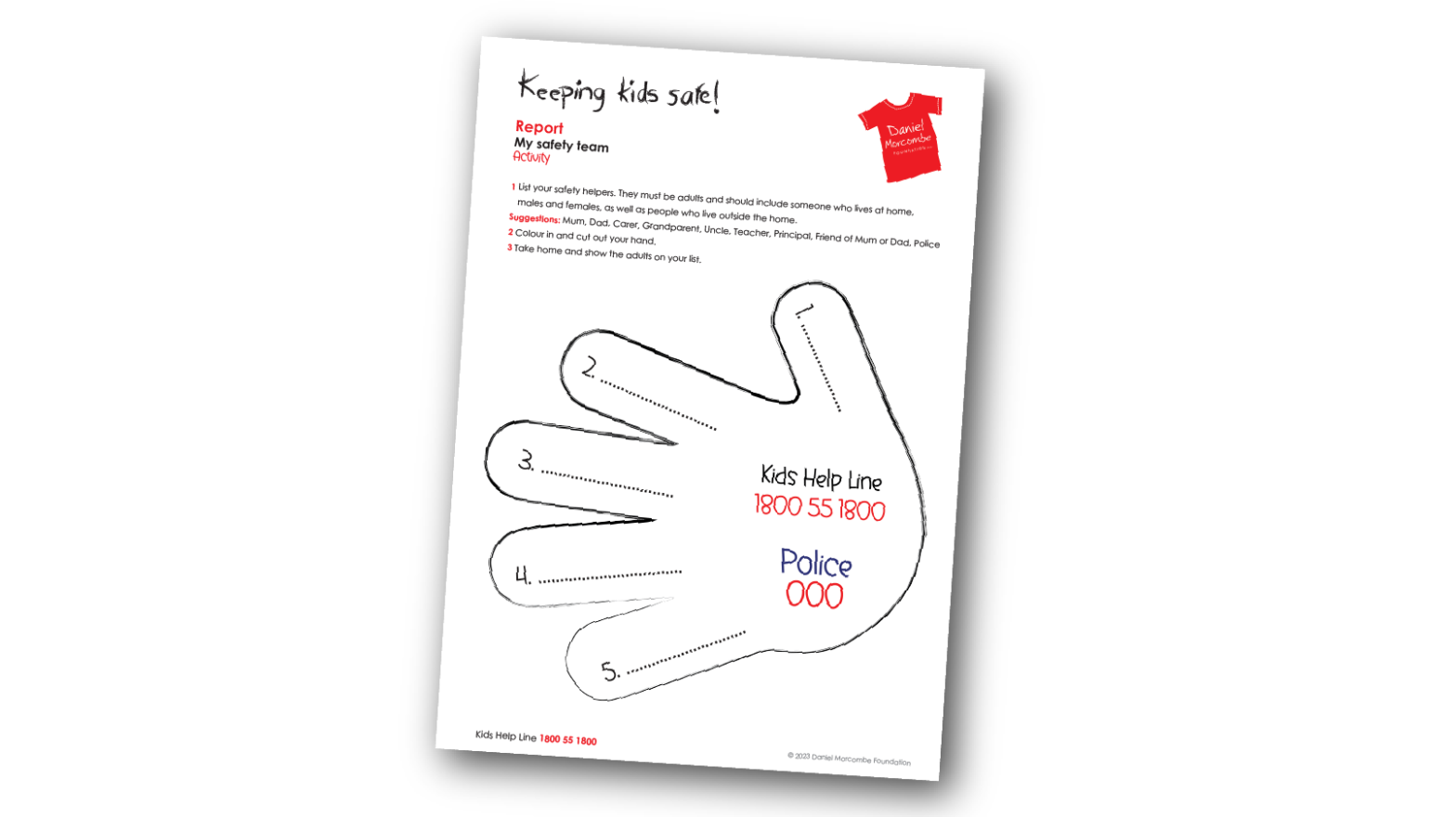
Report - Safety hand activity
Resources for teachers / School & ELC Resources

Keeping Kids Safe Resource Booklet
ABCSL / School & ELC Resources
2023 - Upper Primary
For children aged 8 to 12 with focus on the concepts of ‘my body, my choice’, and strategies children can then use when they need to seek, give or deny consent (permission).
ABCSL / School & ELC Resources
2023 - Early Years and Lower Primary
For children aged 4 to 7 with focus on the concepts of ‘my body, my choice’, and strategies children can then use when they need to seek, give or deny consent (permission).
Personal Safety / Online Safety

That's Suss: eSafety Challenge
ABCSL / School & ELC Resources
2022 - Upper Primary
For children aged 8 to 12, the theme will focus on a focus on boundaries and body parts, using age-appropriate, evidence based personal safety education strategies.
ABCSL / School & ELC Resources
2022 - Early Years
For children aged 4 to 7, the theme will focus on a focus on boundaries and body parts, using age-appropriate, evidence based personal safety education strategies.
ABCSL / School & ELC Resources
2021 – Early Years
For children aged 4 to 7 the lesson will focus on help seeking strategies.
ABCSL / School & ELC Resources
2021 - Upper Primary
The Upper primary lesson is aimed at children aged 8 to 12, the theme will focus on help seeking.
Resources for Parents and Carers
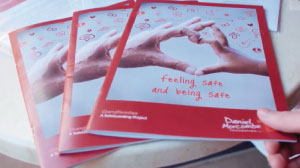
Feeling safe & being safe
When children and young people cannot live at home with their parents, Grandparents are often the ones who step in. This resource booklet is developed to help keep children and young people safe.
Group Activity / Resources for Parents and Carers / Resources for teachers / Recognise, React, Report
Making a safety network
Interactive Resource / Recognise, React, Report
React to feeling unsafe
Year 3 to 6
Learn how to recognise bullying behaviour and its impacts. Video length 1.00min.
Interactive Resource / Recognise, React, Report
Recognise body clues
Year 3 to 6
Our bodies gives us clues when we don’t feel safe. Video length 1.14min.
Interactive Resource / Recognise, React, Report
Recognise, React & Report
Year 3 to 6
Learn safety skills in Australia’s Biggest Child Safety Lesson 2017. Video length 18.34min.
Short Safety Video
Getting lost at the shopping centre
Year 3 to 6
Video length 3.54min.
videos / activities
Australia’s Biggest Child Safety Lesson
Prep to Year 2
Bruce and Denise Morcombe will share strategies for students in year 3 to 6 to help promote safety. How to Recognise, React and Report unsafe situations. Video length 18.15min.
ABCSL / School & ELC Resources
Australia’s Biggest Child Safety Lesson
Early Childhood to Year 2
The lesson has been developed using age appropriate evidence based personal safety education strategies for children between the ages of 3 to 8 years. Video length 24.45min.
Personal Safety / Short Safety Video / School & ELC Resources
Bruce's Cat Tale
Prep to Year 2
Bruce shares a narrative of a cat being chased by a dog. He outlines the cat’s physical reaction – such as fur standing up and hissing. This tale provides a creative and one-step removed way to unpack body clues for children. Video length 7.02min.
Short Safety Video
Obeying rules
Prep to Year 2
Video length 5.47min.
Interactive Resource / Group Activity / Resources for Parents and Carers / Resources for teachers
Making a safety network
Prep to Year 2
This video will teach you how to make a safety network of adults who will listen, believe and help you. Watch the video and complete the activity. Video length 1.22min.
Interactive Resource / Resources for Parents and Carers / Resources for teachers
Homework disaster
Prep to Year 2
What does it mean to get along with others? What would you do? Learn about respect and how to recognise feelings and emotions. Video length 1.11min.
Personal Safety / Interactive Resource / Resources for Parents and Carers / Resources for teachers
Safety School Safety helpers
Early Childhood to Year 2
The lesson has been developed using age appropriate evidence based personal safety education strategies for children between the ages of 3 to 8 years. Video length 4.08min.
Interactive Resource / Resources for Parents and Carers / Resources for teachers
Safety School Body parts
Early Childhood to Year 2
The Safety School lesson is suitable for 3 to 8 year old children. Anthony and Julia teaches key personal safety concepts for early childhood in a fun and interactive way. Video length 4.10min.
Interactive Resource
Safety School Body clues
Early Childhood to Year 2
The lesson has been developed using age appropriate evidence based personal safety education strategies for children between the ages of 3 to 8 years. Video length 2.57min.
Short Safety Video / Interactive Resource / Online Safety
Safe internet use
Year 3 to 6
What it means to be safe online. Video length 3.48min.
Short Safety Video / Resources for teachers
Footy fight
Year 3 to 6
Learn to understand the behaviour and feelings of others. Video length 2.32min.
Personal Safety / Short Safety Video / Online Safety / Resources for Parents and Carers
Safe mobile use
Year 7 to 9
Video length 6.57min.
Short Safety Video
Adam Goodes talks bullying
Year 3 to 9
AFL legend Adam Goodes talks about his experience of being bullied and provides advice. Video length 1.08min.
Short Safety Video / Online Safety
Brooke's story
Year 7 to 9
Brooke shares her story about chatting online. Video length 2.36min.
Short Safety Video / Interactive Resource / Online Safety
Staying safe online
Year 7 to 9
Sharing information and chatting online. Video length 4.05min.
Personal Safety / Short Safety Video / Online Safety
What is Geotagging?
Year 7 to 9
Is your location recorded when you take a photo? Video length 1.07min.
Personal Safety / Short Safety Video
What happens when you call Kids Helpline?
Prep to Year 12
Who will you talk to? How long is the phone call? How often can I call? Will you tell someone what I say? Junior Journo Jasper chats to Jess from Kids Helpline and finds out more. Video length 4.03min.
Personal Safety / Short Safety Video / Interactive Resource
iRelationship
Year 10 to 12
Helping young people to identify respectful relationships and positive relationship qualities. Video length 4min.
Short Safety Video
Party crashers
Year 10 to 12
Video length 5.23min.
Short Safety Video / Online Safety / Resources for Parents and Carers
Safe internet use
Personal Safety / Short Safety Video / Interactive Resource / Resources for Parents and Carers / Resources for teachers
Making a safety network
Special Education
Identify adults who will listen and keep you safe. Video length 3.00min.
Interactive Resource / Resources for teachers
React to feeling unsafe
Interactive Resource / Resources for teachers / School & ELC Resources
Recognise body clues
Special Education
Your body will tell you when you don’t feel safe, what are your body clues? Video length 2.26min.
Short Safety Video / School & ELC Resources
Being safe
Special Education
Our safe places can be at home, at school, with your friends or your safety helpers. Video length 2.28min.
Short Safety Video / Resources for Parents and Carers / School & ELC Resources
Rules for being safe
Special Education
Understand the rules for staying safe and types of touch that are not ok. Video length 2.38min.
Short Safety Video / Online Safety
Cyber safety for parents
Parents and Carers
What are your children doing online? This video is a guide to talking points with your children to help keep them safe in an online environment.. Video length 16.45min.
Short Safety Video / Interactive Resource / Group Activity / Resources for Parents and Carers
Create a family password
Parents and Carers
Does your family have a password? It is quick, easy and fun to make one. Use the password for people who are trusted to pick up the child from school or activities. Video length 2.22min.
Short Safety Video / Online Safety / Resources for Parents and Carers
Online safety tips
Parents and Carers
Argos Taskforce Detective Inspector Jon Rouse delivers some important safety messages for children and young people. Learn about ways you can stay safe online. Video length 2.24min
Short Safety Video / Online Safety
Staying safe online
Aboriginal and Torres Strait Islander
Video length 10.26min.
Short Safety Video
Rules why do we have them
Aboriginal and Torres Strait Islander
Video length 5.32min.
Short Safety Video
Safe vs Unsafe
Aboriginal and Torres Strait Islander
Video length 2.13 min
Personal Safety / Resources for Parents and Carers / Resources for teachers / Factsheet
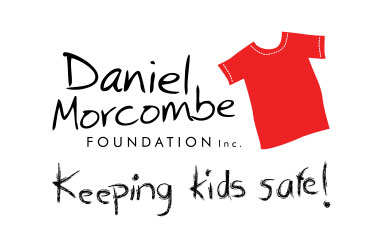
How to be a safety helper
A safety helper is an adult who forms part of a child or young person’s safety network. Safety helpers are responsible for making sure children feel safe and heard.
Resources for Parents and Carers / Factsheet
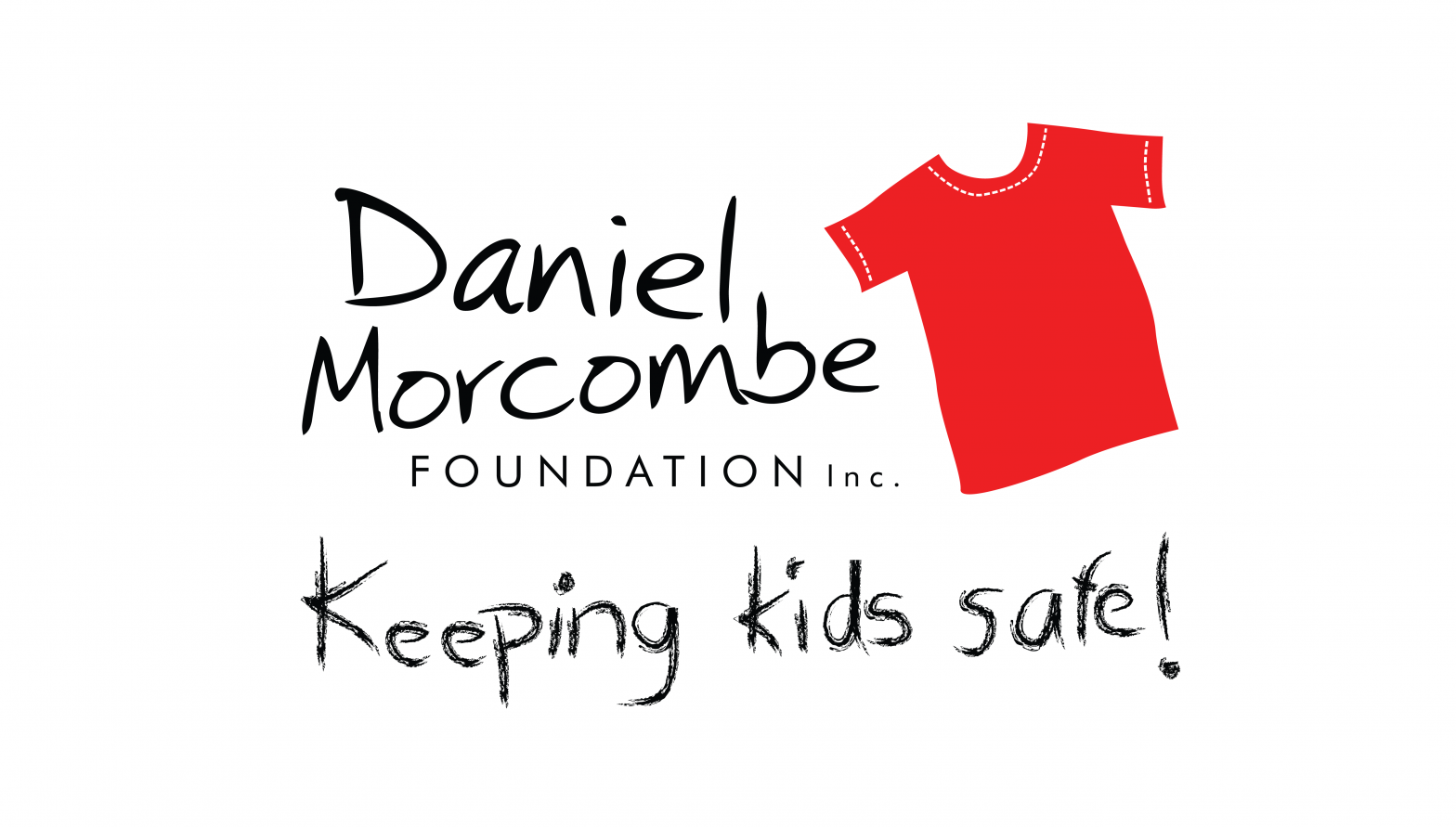
Harmful sexual behaviours
Parents and carers play a crucial role in keeping children and young people safe from harm and abuse. This factsheet has been specifically designed to provide parents and carers with the necessary information and tools to help them to identify and respond to harmful sexual behaviours.
Interactive Resource / Resources for Parents and Carers / Factsheet

Safety Planning
Tailoring safety plans to meet the needs of each family’s unique situation is vital to ensuring that children remain safe from harm.
Online Safety / Resources for Parents and Carers / Factsheet

Video calling
Video calling is fast becoming a popular part of our everyday lives. Apps such as Facetime, Whatsapp, Messenger and Skype are now being used for a range of purposes from socialising with friends and family to engaging in extracurricular activities and online learning for school.
Resources for Parents and Carers / Resources for teachers / Factsheet

Responding to a Disclosure of Abuse
For most children, discussing abuse is extremely challenging and emotionally stressful. They may suffer a high level of anxiety and distress from fear of repercussions.
Resources for Parents and Carers / Factsheet

Positive coping strategies
Moments of crisis and turmoil can lead children and young people to experience intense feelings that can be emotionally overwhelming and scary.
Resources for Parents and Carers / Factsheet

Communication during a crisis
How we communicate with children and young people during a time of crisis can directly influence these outcomes.
Personal Safety / Resources for Parents and Carers / Factsheet

Promoting self-care during a crisis
During times of crisis, children and young people will normally look to the adults in their life as role models for how to cope and keep themselves safe. If adults are modelling positive behaviour strategies for dealing with crisis and stress, children are more likely to follow suit.
Online Safety / Factsheet

Cyberbullying
Internet access is a regular part of life for many children and young people around the world. It is the responsibility of adults to keep children safe, this includes helping them to develop cyber safety skills. Touchscreen technologies allow children to access the internet quickly and easily but often they do not understand the complexity of their actions online.
Online Safety / Factsheet

Cybersafety
The internet can be a wonderful tool for children to learn, communicate with others and play games, but this isn’t without risks. Children are accessing technology and the internet at a younger age than ever before. It’s never too early to start chatting to your child about how to stay safe online.
Personal Safety / Factsheet

Talking personal safety
It is the responsibility of adults to keep children safe, this includes helping them develop personal safety skills. It is not about scaring or frightening children but increasing communication and learning new skills.
Factsheet

Lost, missing or abducted?
There are about 38,000 missing person reports made to police every year in Australia. Young people between the ages of 13 -17 are the most likely group to be reported missing, making up about 50% of all missing person reports.
Resources for Parents and Carers / Resources for teachers

I am concerned about a child
If you have concerns about a child’s safety it can be difficult to know what to do. Most children and young people live in safe and supportive environments however some will sadly experience child abuse.
Resources for Parents and Carers / Resources for teachers / Factsheet / School & ELC Resources

Child sexual abuse
Sexual abuse of children is against the law. Child sexual abuse is when an adult, another child or adolescent uses their power to involve a child in sexual activity. Sexual activity includes sexual intercourse and a range of sexual behaviours that can be physical, verbal or emotional.
videos
From your toes to your nose
Early Childhood
Sing along to this short, fun song that teaches young children that their body belongs to them.
Interactive Resource / Resources for teachers / School & ELC Resources

Bunting flags
Write or draw your own safety messages, cut out and display at home or school.
Interactive Resource / Resources for teachers / School & ELC Resources

Word Search
Can you find all hidden safety words in this word search?
Interactive Resource / Resources for teachers / School & ELC Resources

Crossword
Can you work out all of the words down and across?
Interactive Resource / Resources for teachers / School & ELC Resources
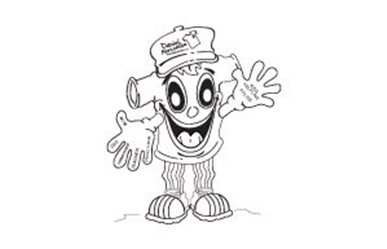
Colour in Morky
Why not have a colouring in competition at your school?
ABCSL / Interactive Resource / Resources for Parents and Carers / Resources for teachers
2020 - Upper Primary
Our upper primary lesson will focus on recognising safe and unsafe situations in the real and online world, for children aged 8 to 12.
ABCSL / Interactive Resource / Resources for Parents and Carers / Resources for teachers / Factsheet
2020 - Early Years
For children aged 4 to 7, the early years lesson focuses on safe and unsafe secrets and surprises.
Short Safety Video / Online Safety / Resources for Parents and Carers
Safe Bedrooms
Television commercial
Personal Safety / Online Safety / Resources for Parents and Carers / Resources for teachers

How do I report online grooming?
Factsheet
It's your move
Short Safety Video / Resources for Parents and Carers / Resources for teachers
Check Mate
Interactive Resource / Resources for Parents and Carers / School & ELC Resources

Guide to The Boomer Challenge
Interactive Resource / Resources for Parents and Carers

How to create a Family Technology Agreement
Personal Safety / Factsheet

Understanding online grooming
Online Safety / Resources for Parents and Carers / Factsheet

How do I react to online grooming?
Personal Safety / Resources for Parents and Carers / Resources for teachers / Factsheet

How do I recognise online grooming?
Resources for Parents and Carers / Factsheet

How predators trick children: what parents need to know
Resources for teachers / School & ELC Resources

Lesson 3: Seeking help
YEAR 7 TO 9
Lesson length: 55min.
Resources for teachers / School & ELC Resources

Lesson 2: Understanding bullying
Interactive Resource / Resources for teachers / School & ELC Resources

Lesson 1: Safe relationships
YEAR 7 TO 9
Lesson length: 55min.
Resources for teachers / School & ELC Resources

Lesson 4: Responding to bullying
YEAR 3 TO 6
Lesson length: 40min.
Interactive Resource / Resources for teachers / Factsheet / School & ELC Resources / Workplace Resources

Lesson 3: Understanding bullying
YEAR 3 TO 6
Lesson length: 40min.
Interactive Resource / Resources for teachers / School & ELC Resources

Interactive Resource / Resources for teachers / School & ELC Resources

Lesson 1: Recognising safe
YEAR 3 TO 6
Lesson length: 40min.
Interactive Resource / Resources for teachers / School & ELC Resources

Lesson 3: Responding to unsafe situations
PREP TO YEAR 2
Lesson length: 40min.
Resources for Parents and Carers / Resources for teachers / Factsheet

Signs of child abuse
Child abuse is one of the most under reported crimes in our community. A recent survey conducted by Act for Kids found that a quarter of adults did not know the signs of child abuse and neglect and would need to google how to report suspected abuse.
Factsheet

Travel safe
Travelling to school or other familiar places by themselves is an opportunity for children and young people to develop confidence and new skills.
Personal Safety

Lesson 2: Being Safe
PREP TO YEAR 2
Lesson Length: 40min
Interactive Resource / Resources for Parents and Carers / Resources for teachers

Lesson 1: Feeling Safe
PREP TO YEAR 2
Lesson Length: 40min
Personal Safety / Resources for Parents and Carers / Resources for teachers / School & ELC Resources
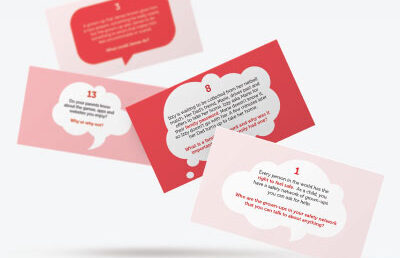
Conversation Cards
Prep to Year 12
Download our Conversation Cards. Choose between the two different conversation cards resources we have available. One for Parents and Carers and the other for Educators.
Interactive Resource / Group Activity / School & ELC Resources
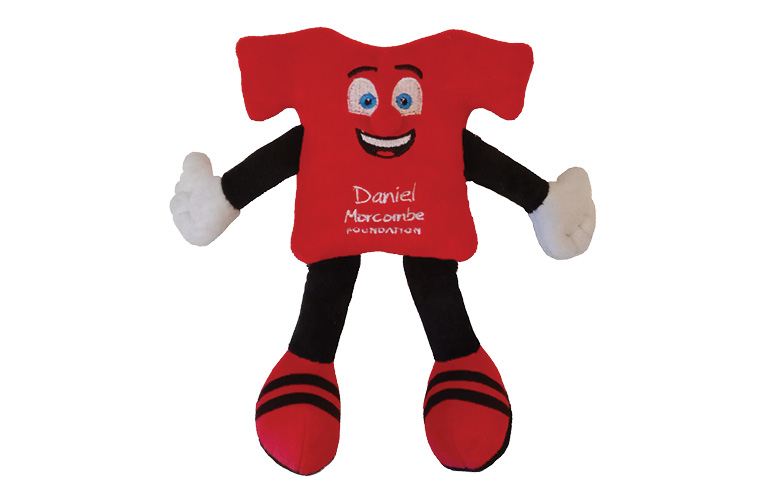
Morky's Safety Mission Board Game
While we take child safety very seriously here at the Daniel Morcombe Foundation, our big, red mascot Morky absolutely loves fun and games!
Short Safety Video / Resources for Parents and Carers / Resources for teachers
Red Flags
Video length 5.05min.
ABCSL / School & ELC Resources
2019
Suitable for children aged 9 to 12 years of age. Our ABCSL news style lesson discusses safety issues with young people.
ABCSL / School & ELC Resources
2018 - Safety school
Suitable for children 3 to 8 years old, ABCSL Safety School teaches key personal safety concepts for early childhood.
ABCSL / School & ELC Resources
2017
Children aged 8 to 12 years old will learn how to Recognise, React and Report unsafe situations and help promote personal safety.
Interactive Resource / Resources for Parents and Carers / Resources for teachers / School & ELC Resources
Safety School Feelings
Early Childhood to Year 2
The lesson has been developed using age appropriate evidence based personal safety education strategies for children between the ages of 3 to 8 years. Video length 4.20min.
Interactive Resource / Recognise, React, Report / School & ELC Resources

Child Safety Chatterbox
A fun take home game that children can play with their safety network.
Resources for teachers / School & ELC Resources
Educator Guide
Year 10 to 12
Resources for teachers / School & ELC Resources
Educator Guide
Year 3 to 6
Resources for teachers / School & ELC Resources
Educator Guide
Prep to Year 2
Resources for teachers / School & ELC Resources
Educator Guide
Early Childhood
Resources for teachers / School & ELC Resources
